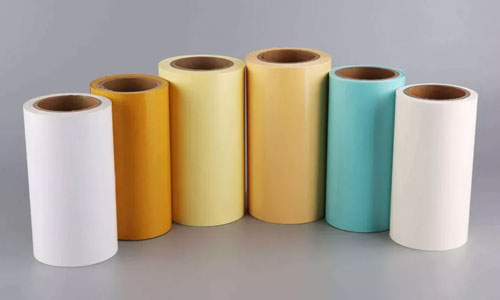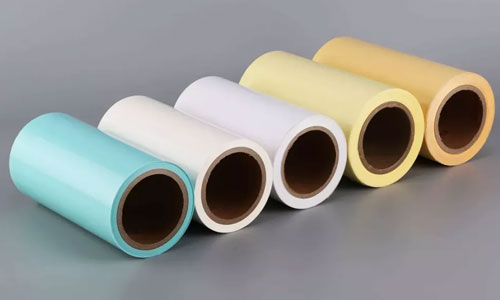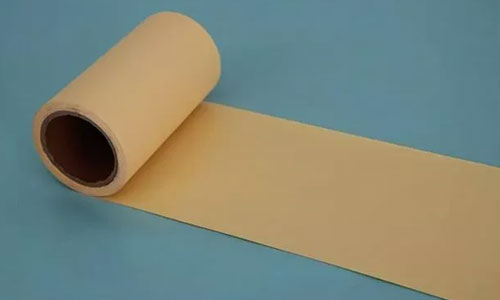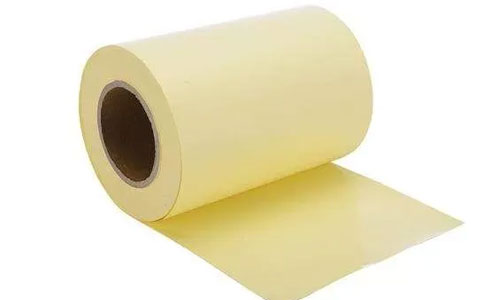When selecting release paper for die-cutting, there are several factors to consider. First, release paper can be classified into plastic release paper and non-plastic release paper. Plastic release paper requires a coating of polyethylene (PE) particles to prevent excessive penetration of the release agent into the paper and ensure proper curing. Non-plastic release paper includes treated papers like glassine and CCK paper.

For coated release paper, the coating is applied on the surface to prevent penetration of the release agent. The coating quantity is important to ensure uniformity and prevent delamination. Single-coated release papers have a thicker coating on the release side and a thinner coating on the non-release side, while double-coated release papers have equal coating quantities on both sides.The choice of base paper is also important. Full wood pulp papers, commonly known as kraft papers, are preferred in the electronics industry due to their lower risk of debris and edge damage during die-cutting. There are also options like double-sided adhesive paper, photographic paper, copperplate paper, whiteboard paper, and milk card.

The selection of release paper depends on a few characteristics:
1. Cleanliness: The cleanliness of the paper's surface is affected by the manufacturing environment. Dust-free environments are ideal but may not always be cost-effective.
2. Release properties: The release degree of the paper depends on the specific formulation used by each manufacturer.
3. Peel strength: This refers to the ease of peeling the product. Different industries may require specific peel strengths, and it is important to select a release paper that meets the desired requirements.
4. Residual adhesion: This indicates how well the release agent cures and prevents residual adhesion after peeling.
The selection process should take into account factors such as cost, product quality, production procedures, the characteristics of the product being manufactured, and the specific usage scenario. Consideration should be given to the properties of the adhesive tape being used, the cost-effectiveness, and the potential requirements for stamping or cutting. Ultimately, the choice of release paper depends on finding the right balance between all these factors.

Peeling Force of Release Paper
The peeling force of release paper mainly depends on the silicone oil formulation and the coating amount. Under constant silicone oil formulation, the coating amount directly affects the peeling performance. A higher coating amount can compactly cover the base paper or post-coated base paper, ensuring even distribution of the silicone oil. On the other hand, a lower silicone oil coating amount may lead to problems such as incomplete coating, resulting in poor peeling.
Some suppliers of release coatings may reduce the silicone oil coating amount to save costs, which could result in a heavy release paper, posing a considerable risk when used. The peel strength at room temperature, measured in N/25mm using standard testing methods for Tesa7475, can be converted into grams.
There are generally five levels of peel strength:
1. Light peel strength: around 0.15N/25mm, approximately 15 grams.
2. Medium peel strength: 0.250N/25mm, approximately 20-30 grams.
3. Heavy peel strength: 0.4-0.6N/25mm, approximately 40-60 grams.
4. Very light peel strength: 0.03-0.05N/25mm, approximately 3-5 grams.
5. Very heavy peel strength: 1.00N/25mm, above 100 grams.
Residual adhesion refers to the force required for the second peel of the release paper after the first peel, reflecting the curing effect of the silicone oil.
Testing the technical indicators of release paper is a complex process. Generally, electronic factories and tape manufacturers can only test several data points.

How to select release paper?
When it comes to selecting release paper, factors such as cost, product quality, production process, product characteristics, and usage need to be considered.
1. Product characteristics: Popular adhesive tapes in domestic markets include Tesa from South Korea, Nitto from Japan, and 3M from the United States. Different adhesive tape properties determine the considerations for selecting release paper.
2. Cost: There is a significant difference between domestic and imported release papers. Generally, the reputation of domestic release papers, especially those used with tapes from 3M or Nitto, is not very good. Issues such as foggy surfaces or low release performance, resulting in difficulty in tearing off the release paper from the product, are common. However, domestic release papers are cheaper than imported ones, offering a larger price advantage. If the company's products are for export, it is recommended to use imported release papers for smoother customs clearance. Domestic production equipment and production levels have resulted in the instability of domestic release papers in certain products, which can lead to the waste of adhesive tape.
3. Production process: If the production involves stamping or cutting, the thickness of the release paper becomes important because low basis weight release papers are not easy to break during stamping. This is also related to the brittleness of the base paper. Poorly brittle base paper may tear the paper and the product during stamping or cutting, failing to achieve the desired effect.
4. Usage: Some products only need to maintain product balance during transportation, requiring a strong bond between the product and release paper to prevent falling.
Regarding the selection of release paper, it is important to find a suitable option. In my understanding, there is no absolute best or worst choice. Domestic release papers have their advantages, and imported ones have their strengths. Selecting release paper is like a college entrance examination process, as all factors need to be balanced to achieve a reasonable and cost-effective result.
Contact: Pamela
Phone: +86 189 6365 3253
E-mail: info@industryprocess.com
Whatsapp:+86 189 6365 3253
Add: Yajing Industrial Park, No. 59 Shuangjing Street, Weiting Town, Suzhou Industrial Park
We chat
